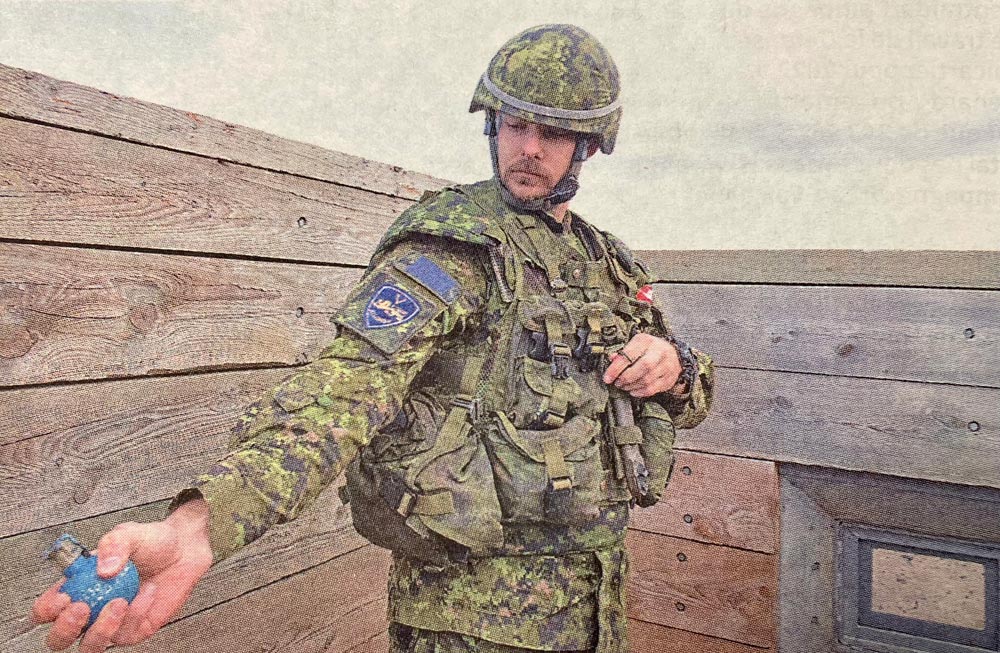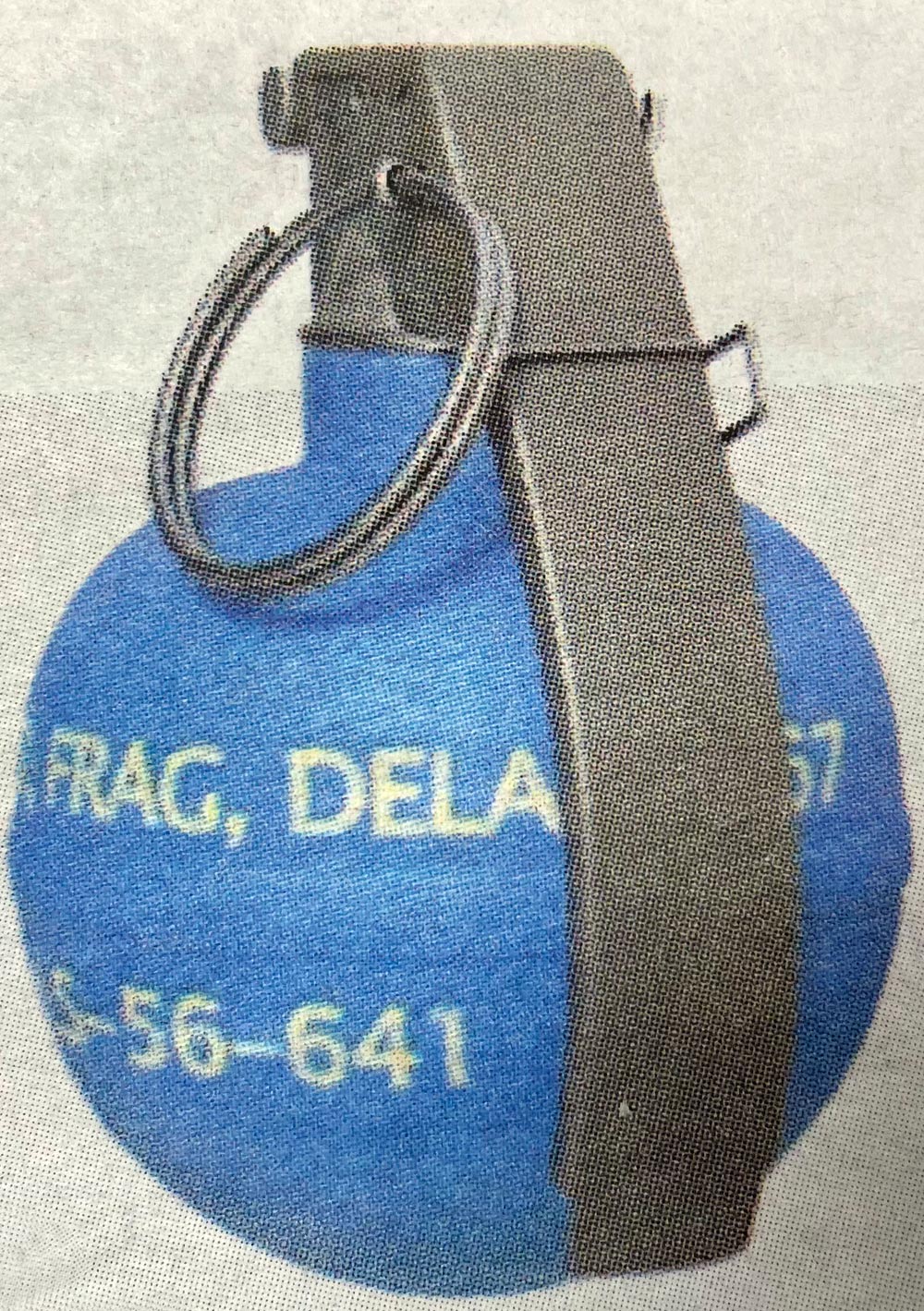

Stag Special
The Canadian Armed Forces (CAF) are not the only ones to use the M67 grenade, under the name C13.
Several armies have, or still use this explosive device, especially in combat.
Thus, during the Falklands War against the United Kingdom (UK) in 1982, the armed forces of the Republic of Argentina used this type of grenade.
The same thing happened during Russia’s invasion of Ukraine — C13s have been supplied by Canada to the Ukrainian forces.
Other user have or had grenades of this type: Australia, El Salvador, Malaysia, Malta, Turkey, Saudi Arabia, but also New Zealand, Philippines and Nicaragua.
The C13 is the Canadian Army’s (CA) standard grenade.
Domestically produced from the US Army’s M67, this small device is used by all Canadian soldiers.
Due to its weight and spherical dimensions, the C13 can only be thrown by hand. It was thus mainly used by the CA infantry against fortified points, trenches or building.
The C13 grenade has been in existence since the early 1960s. The Canadian division of General Dynamic is in charge of manufacturing the explosive.
It has the same main characteristics, namely a spheroidal steel body containing 185 grams of composition B explosive —a military explosive which is a mixture of RD and TNT — the American specifications stating a 6.5-ounce charge.
Its dimensions are 89.6 mm long, with a diameter of 63.5 mm. Its weight, which includes the firing device, the explosive and the body — made of pre-fragmented steel — is 395 grams.
Its body is smooth and not embossed, like many other grenades of the same type, as engineers believe a grenade without an external design will roll along the ground much more easily.
Thus, the grenade will produce only a low noise, which may surprise the enemy.
Like its sister grenade M67, the C13 is nicknamed the “baseball” grenade, because it is shaped like a ball and is essentially thrown by hand, like a baseball player.
A trained soldier can throw the C13 up to 35 metres, although some can reach 50 metres.
There are three distinct steps to arming the C13: first, the soldier removes the pin (safety ring), then places the spoon between the thumb and forefinger, so the pin can be safely removed.
Then, you have to throw the grenade: the internal spring will eject the spoon and allow the firing pin to trigger the primer. From then on, the explosion take place within three to five seconds following the detonation of the explosive in the grenade.
During the explosion, hundreds of steel fragments, which come from the body of the grenade, are dispersed at very high speed and in all directions 360 degrees.
These fragments are deadly to anyone within a five metres radius, and cause injury to anyone within 15 metres radius.
Nevertheless, without any obstacles, some fragment can travel more than 200 metres.
To prevent a grenade from being accidentally triggered, a safety system has been installed to prevent the pin from being accidentally removed, which prevent the spoon on the grenade from moving and releasing the spring-loaded firing pin, which would trigger the grenade’s detonation process.
Honing their throwing skills, 5 Service Battalion soldiers take part in a grenade training at CFB Valcartier’s Athena firing range. Photo Cpl Marc-Andre Leclerc/Valcartier image tech


